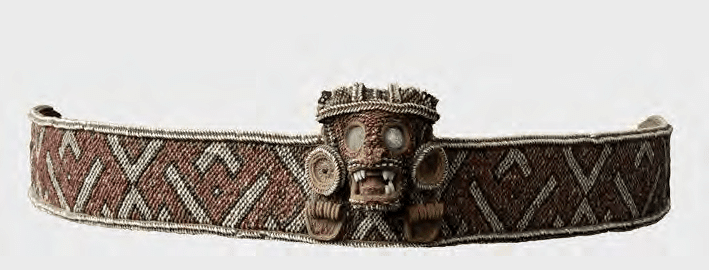Robiou Lamarche's proposed myth-geography of our island.
Robiou Lamarche's Tainos and Caribs: The Aboriginal Cultures of the Antilles is perhaps best read in Spanish. The English translation contains numerous errors, but is still worth the investment for anyone interested in a provocative interpretation of the indigenous Caribbean past. Drawing on the usual sources of ethnohistorians, archaeology, and a comparative approach to related and similar societies in northern South America, Robiou Lamarche proposes a number of fascinating theories on Taino and Carib cosmovision, astronomical knowledge, and cultural developments. By integrating the Caribs of the Lesser Antilles into the narrative, one also begins to see parallels between the two groups and how their legacy can be found today across the Caribbean. It is an epic history encompassing thousands of years of migration, cultural transformations and adaptation, culminating in the Taino chiefdoms of the Greater Antilles and the establishment of the Island-Caribs in the Lesser Antilles. The emphasis on religion and culture also gives a human face to the societies who, to a certain extent, are among our ancestors.
Since one might reasonably worry about the dangers of relying too heavily on Fray Ramón Pané for understanding Taino religion and cosmology, Robiou Lamarche draws from art, petroglyphs, astronomy, and ethnographic research on related societies to expand our knowledge of the Taino world. Naturally, some of the conjectures remain very speculative due to the limitations of our sources. However, the advanced nautical skills of the indigenous Caribbean peoples and certain recurring motifs in their art suggest that Robiou Lamarche was correct about their cosmology reflecting a preoccupation with the Sun, Moon, stars, constellations, and its impact on the natural world. It would be only natural to suspect that the indigenous inhabitants of the Caribbean would organize their calendars, alignment of plazas, rituals, agricultural activities, and social practices around this astronomical observation of the stars, which could be related to the shifts in seasons, tides, animal life, or myths of origin in caves and belief in spirits. The finding of similar artifacts across the Greater Antilles attesting to similar ritual practices (such as cohoba ceremonies) suggest the cosmovision of the so-called Taino sketched by Pané may have been accurate beyond Hispaniola or Haiti.
We only wish the chapters on Carib interactions with Europeans and Africans, as well as the legacy of the indigenous Caribbean population in the 21st century received a more detailed analysis. If, as stated in the text, the Caribs had been interacting with Europeans and Africans for over a century by the time of the 17th century French chroniclers began describing their societies, it would have been interesting to look for elements of African and European influence on the Caribs (and vice versa). The adoption of the sail, for instance, is an interesting example of technological transfer. But what about African or European influences on Carib religion or ritual? Are some of the similarities some claim to see between, say, Haitian Vodou and indigenous Caribbean religion, perhaps a product of the centuries-long interaction of the Caribs with Africans and not a sign of direct Carib or Taino influence in Haitian religion? The Island-Carib societies described by Robiou Lamarche would have been influenced by the European and African captives and assimilated persons living under their rule, composing perhaps 20% of their population. The indigenous legacy today also deserves more scrutiny beyond the elements of material culture that persisted across the centuries. But that would require oral history or analysis of popular religion in the Caribbean on a vast scale.


No comments:
Post a Comment